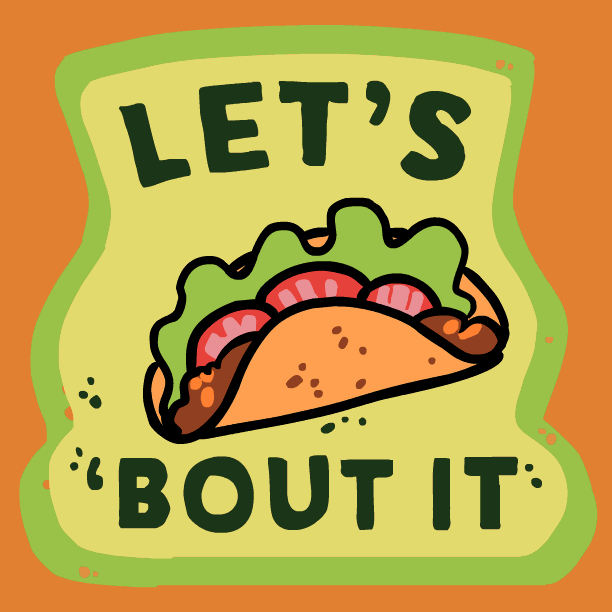

Let's Taco Bout the Letter /O/
Madeline Northrop
Rationale:
This is a lesson that is meant to teach students to identify the phoneme /O/ with the corresponding grapheme o. For students to read, they must be able to map out the relationship between spellings and the pronunciation of words. This lesson will give students the opportunity to practice identifying /O/ in spoken word and the grapheme o in written text. To remember the /O/ phoneme we will associate it with a taco and say, “Open wide” as we take a bite into our taco. We will practice listening for the phoneme /O/ in two different tongue ticklers, practice reading the grapheme o in a new decodable book, followed by practicing identifying what words make the correct phoneme with a worksheet.
Materials:
-
Decodable book: Is Jo Home?
-
Photo of a person eating a taco
-
Letterboxes and tiles: g, l, o, b, e, h, p, n, s, m, k, t, v, c, d, d
Procedure:
-
Say: "Today we’re going to learn about the letter o. To become expert readers, we have to learn how all the letters in the alphabet can sound. We already know that the letter o can make an /o/ sound, but it can also make the sound /O/. For example, when we say words like 'taco', we here the /O/ sound. Let’s take a big bite of our taco and say, 'open wide' as we take a bite!" Motion like you are eating a taco.
-
Say: "Let’s practice listening for the sound /O/. We can listen for it because in some words the letter o will say its own name. I’ll say two tongue ticklers and listen for the sound /O/. Owen had oatmeal over by the ocean. Now listen for the /O/ in this tongue tickler. Oscar ordered olives on his pizza? Do you hear the /O/ sound? Which tongue tickler used the /O/ sound?"
-
Say: "One way the letter o will say its own name is if it is paired with a silent e. For example, in the word home." Write the word home on the board. "The silent e makes the o a long vowel. Whenever we see an o and an e split by a consonant, like in home, we can assume that the sound will be /O/. To use this in a letterbox lesson, we have to put the silent e outside the last box because it does not make a noise." Draw three boxes on the board. In order the boxes should have: h, o, m and on the outside of the last boxes write the letter e. "Let's do another example together. This time our word is globe. We will use four boxes. In our first box, we use the /g/ sound. In our second box is the /l/ sound. The third box is our /O/ sound and in our final box is the /b/ sound. We still need to include the silent e, so we have to put it outside our last box."
-
Say: "Now we will try a couple without my help. I’ll tell you how many boxes you will need for the word and you will put the appropriate sounds in each box. Our first word you will need three boxes and the word is rope. Check with your table mate to see if you got the same answer. We might do words that we have already learned or silly words that aren’t real words." Here are some examples of words you can use for the letter box lesson:
-
3 boxes: hope, nose, pole, shole
-
4 boxes: smoke, stove, stole, close
-
2 boxes: ode, odd
-
-
Say: "We need to read all the words we have just spelled. I’ll write them on the board and then you will tell me how you would pronounce them. We’ll start with globe. We have just learned that when we see the silent e we can assume the vowel will say its name. Therefore, we know that the o in this word will make the sound /O/. From the beginning, we hear /g/ /l/ /O/ /b/ and we do not pronounce the silent e. Let’s go to the next word and you can show me how you would pronounce it." Now start students on their letterbox lesson and ask them to pronounce each phoneme in their word.
-
Say: "You just got a lot of practice spelling and sounding out words with the vowel o paired with the silent e. Now we are going to read a book called Is Jo Home? This story is actually told from a puppy’s point of view. The puppy starts by going to Jo’s home to see if she can play. The puppy loves to play with Jo because she will pat the puppy’s nose and give the puppy a bone. The puppy imagines hiding the bone and where she will put it. Do you think that Jo is home? Where will the puppy want to hide the bone that Jo will give it? With your table mate, take turns reading a page aloud to each other. We will discuss the book a little more when everyone is done."
-
Say: "That was a really good story! What did the puppy do while she waited for Jo to get home? I hope everyone really liked the book. We’re going to pass out a worksheet that will focus on the vowel o."
Resources:
https://www.shutterstock.com/image-vector/boy-eating-taco-264277679
BRL sample: Oh, I didn’t know! By Geri Murray